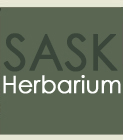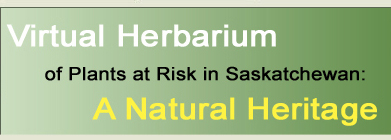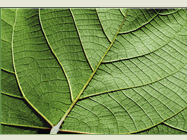|
| Erigeron lonchophyllus
Hook. |
|
| |
| TAXONOMY |
| |
| Family: |
Asteraceae or Compositae |
| Genus: |
Erigeron |
| |
| Species Synonyms: |
Erigeron lonchophyllus var. laurentianus
Victorin
Erigeron minor (Hook.) Rydb.
Trimorpha lonchophylla
(Hook.) Nesom |
| Common Names: |
hirsute fleabane
low meadow fleabane
shortray boreal daisy
shortray fleabane
spearleaf daisy |
| |
| DISTRIBUTION |
| |
| Canada: |
Yukon Territory – Mackenzie River Delta,
Northwest Territories – Saskatchewan, Manitoba, south through British
Columbia –Alberta; isolated areas along the James Bay coasts of Ontario
and Quebec |
| Saskatchewan: |
northern and western Saskatchewan |
| Ecoregion: |
Cypress Upland, Mixed Grassland, Moist Mixed Grassland,
Aspen Parkland, Boreal Transition, Mid-Boreal Upland, Selwyn Lake Upland |
| |
| HABITAT |
| |
| Saskatchewan: |
wet soil on shores |
| |
| RARITY STATUS |
| |
Provincial
Status According
to Harms (2003): |
Vulnerable |
| Nature Conservancy
Status: |
G5 |
Saskatchewan
Species at
Risk Status: |
None |
| COSEWIC Status:
|
None |
| |
| Hirsute fleabane
can be easily overlooked and is considered vulnerable in Saskatchewan. |
| |
| SPECIES
DESCRIPTION |
| |
| Height: |
10 - 50 cm tall |
| Roots: |
fibrous, weak |
| Stems: |
branched, leafy, hirsute |
| Leaves: |
basal and stem leaves; basal leaves to 15 cm long,
to 12 mm wide, inversely lance-shaped to spatula-shaped; stem leaves alternate,
sessile, linear, long and conspicuous, sometimes exceeding lower heads of
inflorescence, sparsely to moderately stiff hairy, margin entire |
| Inflorescence: |
heads several, in unbranched clusters; stalks
hairy, not glandular; bracts in 2 overlapping rows, 4 – 8 mm high,
outer series shorter than inner, light green, may be purplish at tip, short
or long hairy but not glandular |
| Flowers: |
ray flowers 2 – 3 mm long, 0.2 to 0.5 mm
wide, white or pink; rayless female flowers absent |
| Fruits: |
achenes 2-nerved; pappus single, 20 – 30
bristles, equalling or surpassing disc petals, white to yellowish, may have
a few outer bristles |
| |
| ERIGERON
SPECIES FOUND IN SASKATCHEWAN |
| |
| 1 Leaves dissected |
E. compositus |
| 1 Leaves not dissected |
2 |
| |
|
2 Rays absent or inconspicuous (<
6 mm, if greater than 6 mm long, < 1 mm wide)
|
3 |
| 2 Rays present (> 6 mm) |
9 |
| |
|
| 3 Bracts hairless |
Conyza canadensis var. canadensis |
| 3 Bracts hairy and/or glandular |
4 |
| |
|
| 4 Bracts glandular, may be sparsely
hairy |
5 |
| 4 Bracts pubescent, but not glandular |
6 |
| |
|
| 5 Several to many heads; densely glandular
bracts |
E. acris ssp. politus |
| 5 Head solitary; somewhat glandular
bracts |
E. acris ssp. debilis |
| |
|
| 6 Pappus double |
7 |
| 6 Pappus single |
8 |
| |
|
| 7 Bract hairs flattened, stem hairs
appressed |
E. strigosus var. septentrionalis |
| 7 Bract hairs rounded, stem hairs
appressed to ascending |
E. strigosus var. strigosis |
| |
|
| 8 Leaves shorter than stalks of flower
heads; inflorescence branched, occasionally solitary; rayless female flowers
present between ray and disc flowers |
E. elatus |
| 8 Leaves sometimes exceeding lower
heads in inflorescence; inflorescence unbranched; occasionally solitary;
rayless female flowers absent |
E. lonchophyllos |
| |
|
| 9 Plants < 20 cm high; heads few
to solitary |
10 |
| 9 Plants > 20 cm high; heads 2
– many |
12 |
| |
|
| 10 Leaves usually basal only; flowers
white |
E. radicatus |
| 10 Stem leaves present; flowers yellow
to white or purple |
11 |
| |
|
| 11 Leaves 3 – 7 cm long, with
1 – 3 stem leaves; flowers yellow to white or lavender |
E. ochroleucus var. scribneri |
| 11 Leaves 1 – 3 cm long, many
stem leaves; flowers purple or white |
E. hyssopifolius |
| |
|
| 12 Stems without leaves or with bract-like
leaves |
E. pumilus |
| 12 Stems distinctly leafy, often reduced
upwards |
13 |
| |
|
| 13 Ray florets coloured |
14 |
| 13 Ray flowers white |
16 |
| |
|
| 14 Stem leaves largest at the middle
of stem |
E. hyssopifolius |
| 14 Stem leaves reduced upwards |
15 |
| |
|
| 15 Leaves clasping and with ear-like
lobes |
E. philadelphicus var. philadelphicus |
| 15 Leaves not clasping or with ear-like
lobes |
E. glabellus var. glabellus |
| |
|
| 16 Stem leaves largest at the middle
of stem |
E. hyssopifolius |
| 16 Stem leaves reduced upwards |
17 |
| |
|
| 17 Perennial with woody persistent
base of stem, tough rhizome, or thick taproot |
18 |
| 17 With neither deep-well developed
rhizomes nor woody stem bases, at most a short rhizome or stolons |
19 |
| |
|
| 18 Persistent woody base of stem;
stem leaves 5 – 7 |
E. glabellus var. glabellus |
| 18 Thick taproot; stem leaves >
10 |
E. caespitosus |
| |
|
| 19 Pappus of ray and disc florets
unlike (pappus of rays single) |
E. annuus |
| 19 Pappus of ray and disc florets
alike |
E. asper |
|






